ghana
Two Ghanaian Hindus Take Sannyas Vow
In march 2023, the indian Social Cultural Center of Accra, Ghana, celebrated the initiation of two new renunciates. Weeks earlier, reports Pulse.com.gh, Swami Shankarananda and Swamini Geetananda took vows in India on Mahasivaratri. They belong to the Hindu Monastery of Africa, the foremost indigenous Ghanaian Hindu organization, founded in 1975 by Swami Krishnanand Saraswati.

Swami Shankarananda was born into a Christian family, then delved into Buddhism and soon Hinduism, all before age 14. He joined the monastery in 2009 and recently completed the Chinmaya Mission Vedanta program in India fr0m 2020–2022.
Swamini Geetananda belonged to the Presbyterian Church of Ghana before being introduced to Hinduism by her brother. She joined the monastery in 1983, guided by Swami Ghanananda Saraswati (1937–2016), the first black African Hindu monk, then by his successor Swami Satyananda Saraswati. Worshiping for many years, she was initiated as a brahmacharini in 2018, then also took the same Chinmaya Mission Vedanta program from 2020–2022.
Kofi Dadzie, officiating at the event, said, “The path to enlightenment is the ultimate goal for every Hindu, so to have people of this distinguished calibre undergoing the training and finally being initiated as swamis is extraordinary.”
belgium
Hinduism Seeks Recognition
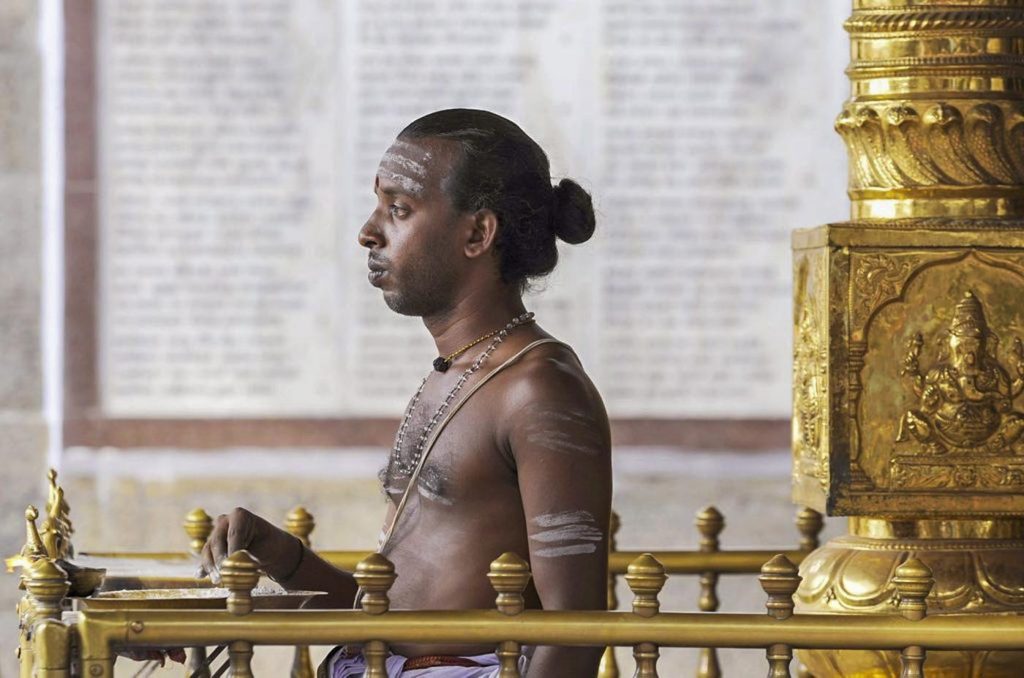
In july 2023, the belgian government approved an initial annual us$43,785 subsidy to the Hindu Forum of Belgium, with potential to be doubled. As shared in The Brussels Times, it’s a significant milestone in the slow march towards Hinduism’s recognition as an official religion. The Hindu Forum first applied for the status in 2013, and they expect the process to take another several years at least.
Belgian law currently offers official recognition to Catholicism, Protestantism, Anglicanism, Islam, Judaism, Eastern-Orthodoxy and Buddhism, as well as several non-religious philosophical organizations. All receive government subsidies in proportion to the number of adherents. Official recognition means that priests or preachers can receive a state stipend and parents are able to choose to send their children to specialized religious schools.
The Hindu Forum estimates there are up to 40,000 active followers of Hinduism, including Western converts who account for almost half of this number.
vietnam
Visit Ancient Hindu Temples
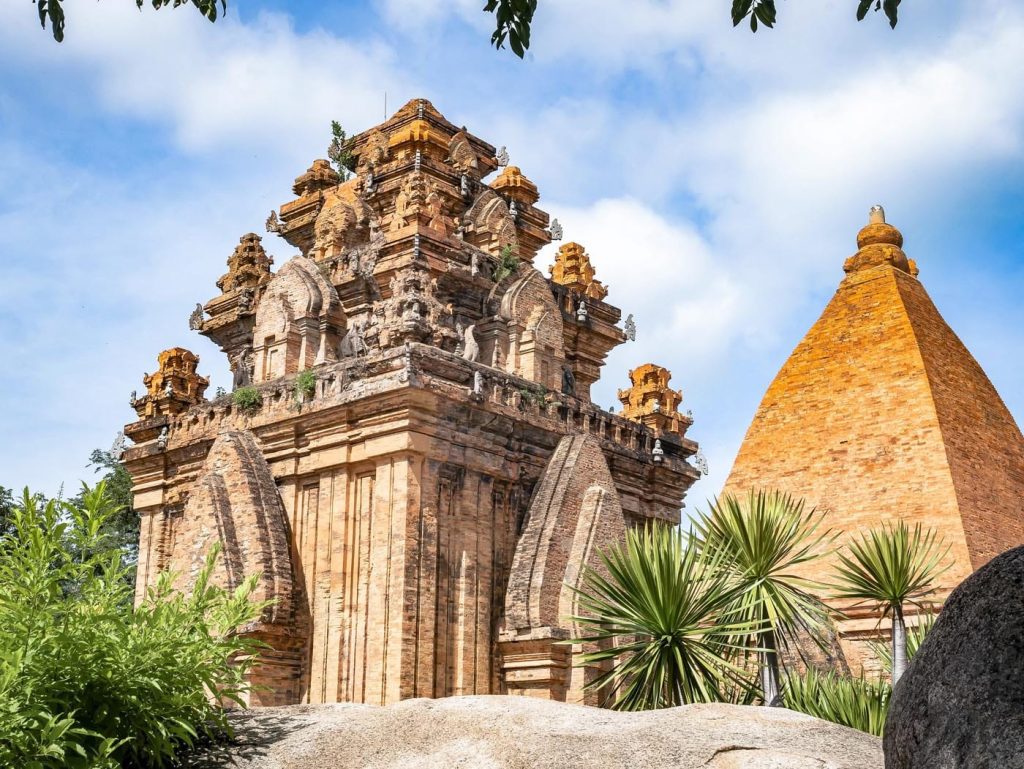
Outlook traveller, india’s largest travel magazine, recently published a guide to some of Vietnam’s oldest surviving Hindu temples. They were built in the first millenium of the Common Era after traders and others from India ventured into Southeast Asia. These interactions led to the assimilation of Hindu beliefs and practices into the local indigenous cultures, creating a unique blend.
For example, the Po Nagar Tower in Nha Trang, dedicated to Goddess Yan Po Nagar, was built under the supervision of Cham ruler Satyavarman in 784bce. Yan Po Nagar is revered as the mother figure of the nation. The annual Thap Ba festival here honors the Goddess. Yards away lies another temple where pregnant women receive blessings in the Goddess’s name. For more temples and info, go to tinyurl.com/hindutemplesvietnam.
ireland
Lord Murugan Finds a Home
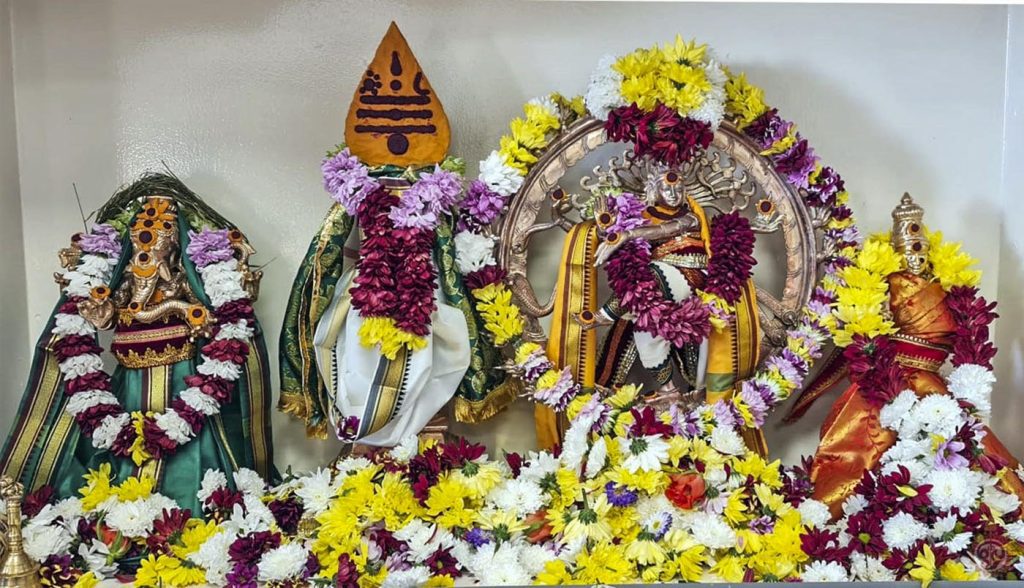
The first anniversary of the Ireland Murugan Temple in Athlone was held in June 2023. Perhaps by divine coincidence, the temple is located in a suburb called Monksland. Utilizing a small hall initially, it is the first Murugan temple in Ireland and first Hindu temple outside of Dublin.
The Westmeath Independent, on hand to document the event, said over 200 devotees gathered from all over Ireland, with more joining through a livestream. The temple’s youth group performed Bharatanatyam dance and sang carnatic music.
Kandee Singham, founder of the temple, said, “This event was a great opportunity for all the temple devotees to come together and create a further unity amongst the Hindu and wider communities.” Michael Power, a local resident and the CEO of Involve Youth and Community Services, said, “It was a wonderful experience to be invited to join this celebration; the community is a warm and welcoming one and I have gained a wealth of understanding of the Hindu culture.”
malaysia
A Plea to Uncover Southeast Asia’s Oldest Civilization
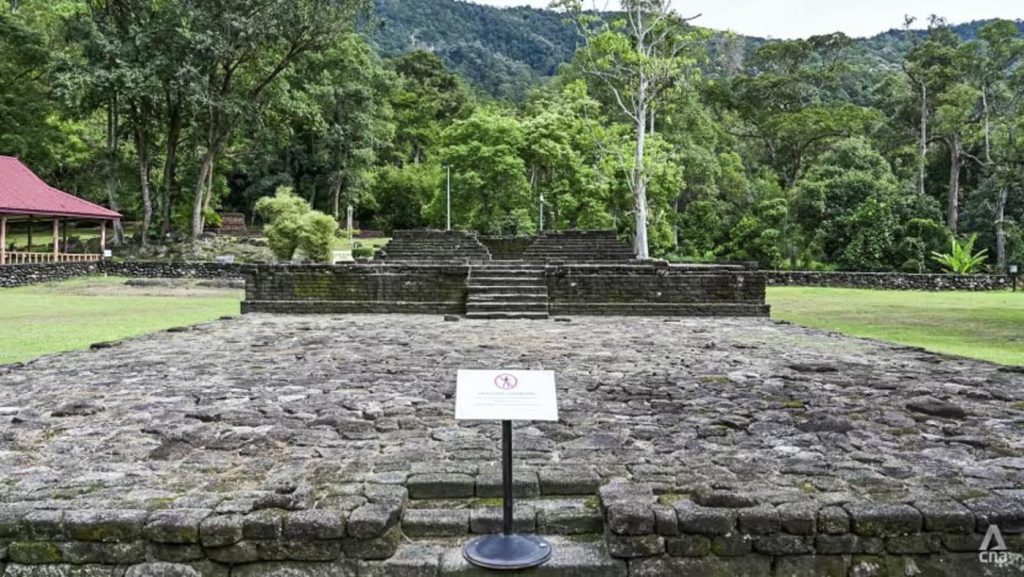
From 2007 to his retirement in 2021, Professor Mokhtar Saidin and his team from Universiti Sains Malaysia uncovered evidence of a thriving iron export industry at the Sungai Batu archaeological site in Bujang Valley in the coastal state of Kedah. Dating as far back as 788bce, it is much older than the famous monuments of Borobudur (8th century) in Indonesia and Angkor Wat (12th century) in Cambodia, reports Channel News Asia.
For more than a century, researchers have dug up evidence in Bujang Valley of Hindu-Buddhist temples, iron smelting sites and ancient relics. They say this is proof the area was a bustling, cosmopolitan trading port on the sea route from China to India and further on to Arabia. Mokhtar, who believes only ten percent of the area has been uncovered, is concerned that research has stalled since his retirement, partly due to local controversy of these ancient discoveries occurring in an Islamic country. He prays that officials will heed the call to continue exploration.
india
Scientists Visit Tirupati Temple before Moon Mission
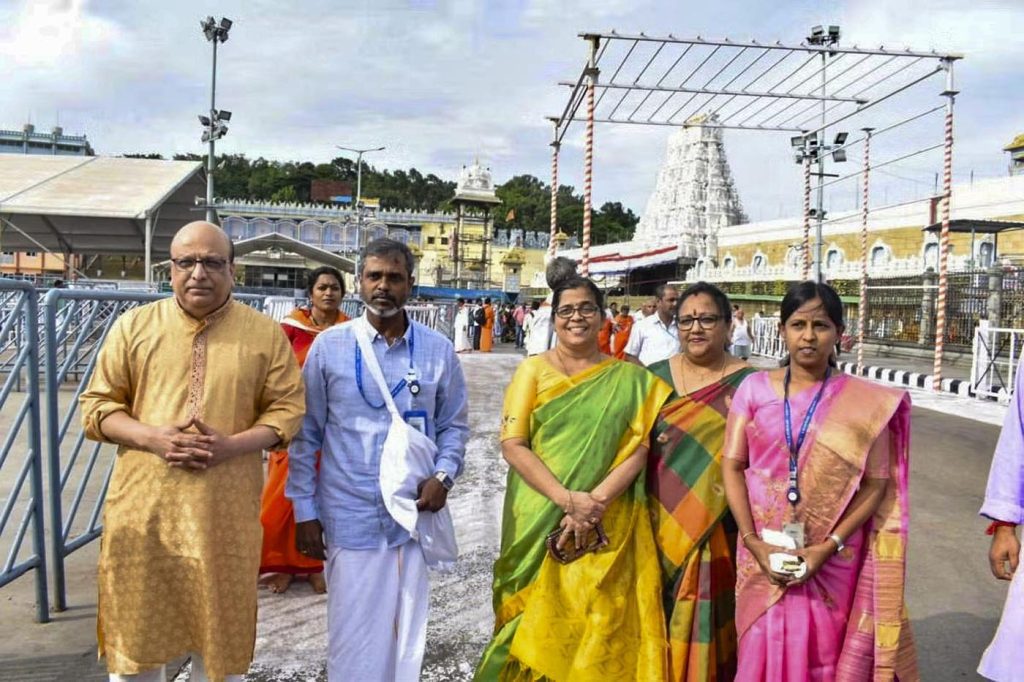
Excerpted from a opinion piece at Firstpost in July 2023 by Vijender Sharma
In the run-up to the launch of Chandrayaan-3, a team of scientists from Indian Space Research Organisation (ISRO) visited the Tirupati Venkatachalapathy temple in Andhra Pradesh, taking a miniature model of Chandrayaan-3 with them. As expected, a section of influencers and media personalities ridiculed the scientists, accusing them of being irrational and abandoning their belief in science in favor of the unknown. Such ridicule has happened before and is likely to happen again, as ISRO scientists will probably visit temples before future missions.
One can argue that a scientist visiting a temple is an irrational behavior and science alone should be paramount. These reactions, like many other progressive ideas, trace their origins in the Western world. The soft power of the West, especially the US, influences the rest of the world, propagating Western ideas as the only truth. The same influence contributes to the ridicule of anything religious.
Is it strange that ISRO scientists are comfortable visiting a temple and don’t find themselves in conflict with their scientific beliefs? The comfort doesn’t come from being religious; it comes from knowing that Hinduism and science are not two opposing forces. They know this because, for them, both are complementary, both serve each other, both are at ease with each other.
From texts and archaeology, we know that science and religion in India were never opposed to each other, unlike in the West. In fact, people depended a great deal on science to practice their religion. From building the altars to finding the right time to perform a ritual, people depended on astronomers and their astronomical tables. Imagine having to build a square altar and then a circular one with the same area as that of the square altar. This could only be possible if one knew the value of Pi. Then comes the right time or the muhurta to perform the ritual. The position of nakshatras, the time of the day, the day of the month, planetary positions, etc., have to be calculated to arrive at the right time. All this requires knowledge of astronomy.
java-bali
Palm-leaf Manuscripts Being Digitized in Britain

In collaboration with the Ecole Francaise d’Extreme-Orient, the British Library is digitizing its collection of 70 palm-leaf manuscripts from Java and Bali, written in Old Javanese, Javanese and Balinese. This article is based on the library’s Asian and African Studies Blog’s report on the project.
For centuries, palm leaf was the standard writing medium throughout India and Southeast Asia. The leaves, usually of the palmyra or talipot palms, were cut, treated and dried. Text was incised on the leaf with a sharp stylus or knife and then rubbed with ink, which settled in the grooves of the letters.
In Java and Bali, the palmyra is used for palm-leaf (lontar) manuscripts. These usually have four lines of text on each page. However, probably the oldest Indonesian palm-leaf manuscript in the British Library is a copy of Sang Hyang Hayu (“The Divine Good”), written in Old Javanese, circa 1493ce, not on palmyra but on gebang. The gebang palm (corypha utan) is associated with very old manuscripts from west Java. Although many leaves are intact, there are countless small fragments which have been grouped together on small strips of laminate for repairs.
The most intriguing and potentially significant collection of Javanese manuscripts in the British Library was acquired by Col. Colin Mackenzie during his stay in Java from 1811 to 1813. Mackenzie described them: “Twenty-four texts written on Cadjan (kajang) leaves in the Hindoo manner, most of them in the Javanese character, and some in a character yet undeciphered.
“From explanations of the titles of some, they appear to belong to the ancient (or Dewa) religion of these islands; but though a native of superior intelligence was found capable of reading them, the prejudices of religion prevented any further information of the contents of books supposed to be adverse to the Muhammedan tenets. This difficulty might, however, have been got over. These texts are apparently ancient, and brought by the civility of a regent from a long deserted house in the distant forests, where they had lain neglected for years.”
The British Library collection from Bali includes a manuscript of the Ramayana and illustrated leaves containing images ranging from depictions of narrative scenes from literary epics, to magical diagrams and calendars.
Already over half the Javanese and Balinese manuscripts held in the British Library are viewable on their website. The project is scheduled to be completed by the end of 2023.
Briefly
agastya gurukulam, the world’s first modern Sanskrit-medium school, unveiled its first North American campus in Houston, Texas in August 2023, according to the India Herald. By using Sanskrit and Shastra-based education at the K-12 level, linking to the contemporary world, Agastya Gurukulam opens up the timeless wisdom of India’s ancient texts and traditions to students.
for the many migrant workers who traveled from Nepal to Malaysia in search of better wages and opportunities, life is lonely without family nearby. So, reports Free Malaysia Today, a group of Malaysian-Nepali women performed a Raksha Bandhan ceremony in August, 2023, tying thread around the workers’ wrists to welcome them as “brothers” into their families.
in July 2023, flights between Chennai, India, and Jaffna, Sri Lanka, were increased to daily in order to boost religious tourism. In addition, the Hindustan Times reports, a ferry service was re-launched in October, four decades after it ceased due to Sri Lanka’s civil war. The ferry traverses the Palk Strait in three to four hours and is a good alternative for smaller travel budgets. These initiatives are part of a broader effort by India to help rebuild Sri Lanka and counter China’s influence.
the sri Venkateswara temple in Helensburgh, south of Sydney, Australia, held a kumbhabhishekam in April 2023 after two decades, reports Ausstralian Broadcasting Corporation. Renovations, started last year, cost us$2.036 million. The event was witnessed by more than 20,000 Hindus, including 15 priests and visitors from Singapore, Malaysia and Mauritius. The large temple, built on top of a hilly area, opened in 1985.
In 2023, the indonesian ministry of Religion is distributing us$1,324,319 to 415 Hindu temples across 33 provinces, according to Kemenag. Prof. I Nengah Duija, Director General of Hindu Community Guidance, says the annual assistance program for temples is part of the government’s effort to realize inclusivity in religion.
